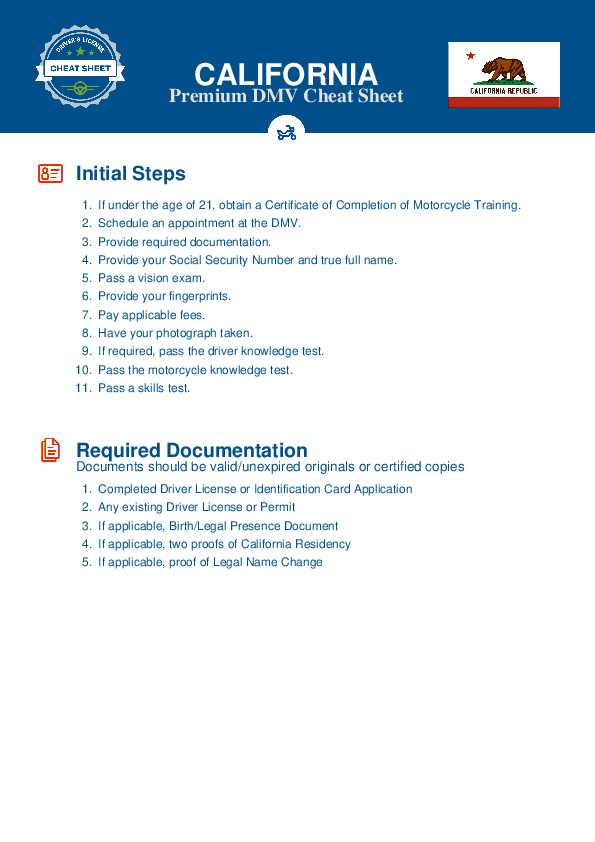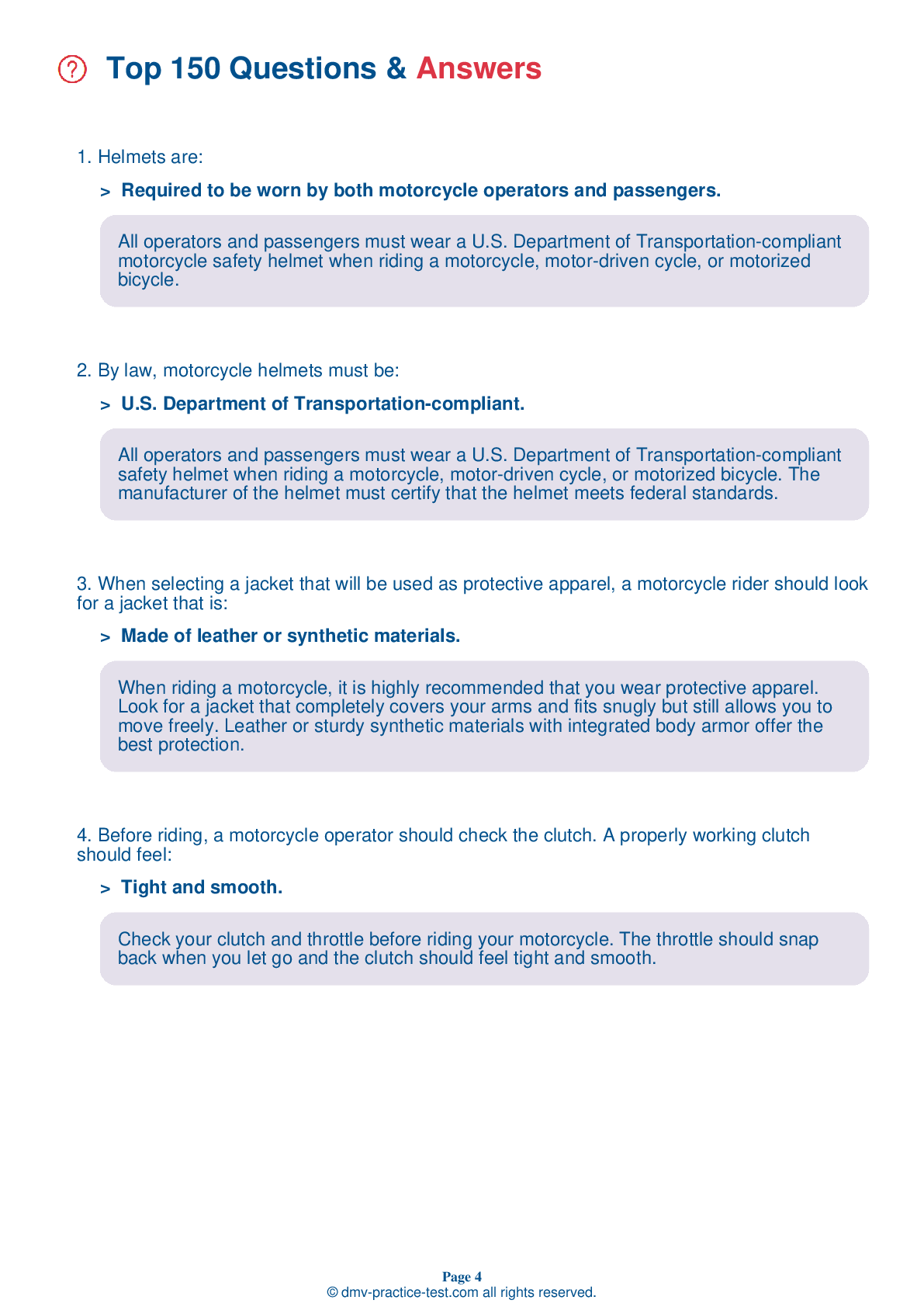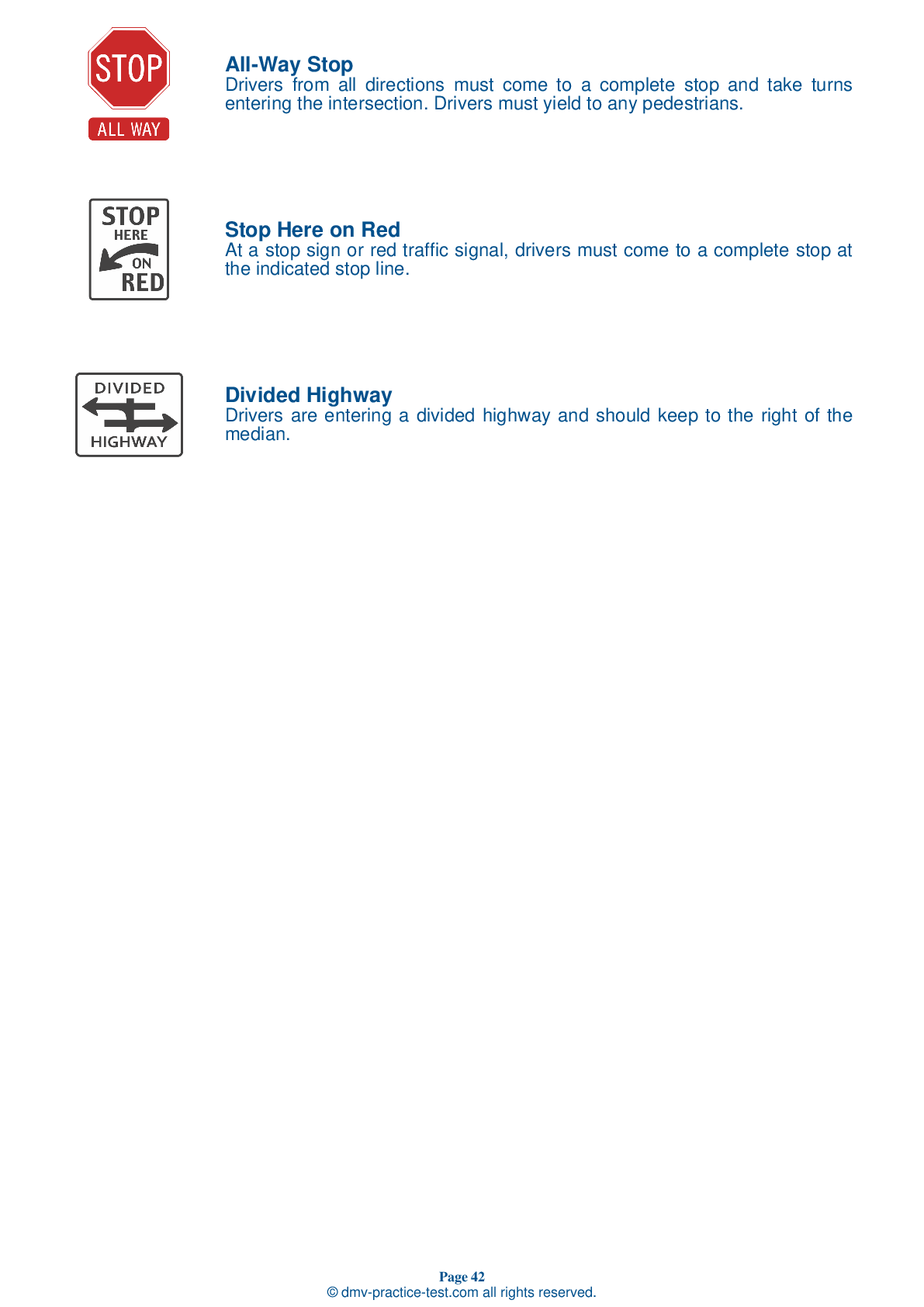FREE California DMV Motorcycle Practice Test 2024
Here is a free practice exam for the motorbike endorsement on a California driver's license. This exam will put your knowledge of the California Motorcycle Handbook to the test. This test will assist you in preparing for the official state exam, but completing it does not ensure that you will pass the state exam. Before taking either test, make sure you have thoroughly studied the manual. Each question on this test is a multiple-choice question with four options. Each question has just one correct answer, so choose the one you believe is the best. Each question includes a suggestion to assist you in determining the correct answer. (Please note that no suggestions will be provided on the actual CA state exam!) If you select an incorrect response to a question, the right answer as well as an explanation will be displayed. The exam will then automatically go on to the next question. Make sure you review the parts on this test that you found difficult before taking the state exam. This test has 30 questions, and you must correctly answer 24 of them to pass.



